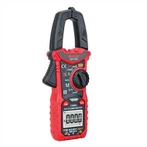What are the common T90/T50 response times in gas detectors
Regardless of the brand of gas detector, whether it is a domestic gas detector or a major foreign brand, we can see the T90 or T50 response time in a sensor parameter. It is a very important parameter, but what exactly does it mean?
In fact, in addition to the common T90 and T50 response times, there are also less common T10 and T20 response times. But conceptually, they all mean the same thing, reflecting the response speed of gas detectors to toxic and harmful gases.
In general, the T50/T90 response time refers to the time it takes for a gas detector to change from reading 0 to 50% or 90% of the concentration of toxic gas measured in the environment. For example, for a hydrogen peroxide detector, its T90 response time is ≤ 60 seconds. It means the time required for the hydrogen peroxide detector to change from reading 0 to 90% of the actual hydrogen peroxide concentration in the environment.
For example, if the concentration of hydrogen peroxide in the actual environment is 5ppm, then after less than 60 seconds, the reading of the detector will change to 4.5ppm; If the concentration of hydrogen peroxide in the environment is 20ppm, then after less than 60 seconds, the reading of the detector will change to 18ppm.
Therefore, we can know that the shorter the T50/T90 response time, the more sensitive the gas detector itself is. This is why T50/T90 is a very important sensor parameter for gas sensors. If a certain brand cannot provide T50/T90 sensor parameters, it is necessary to carefully verify whether the performance of the sensor itself is good or not.






